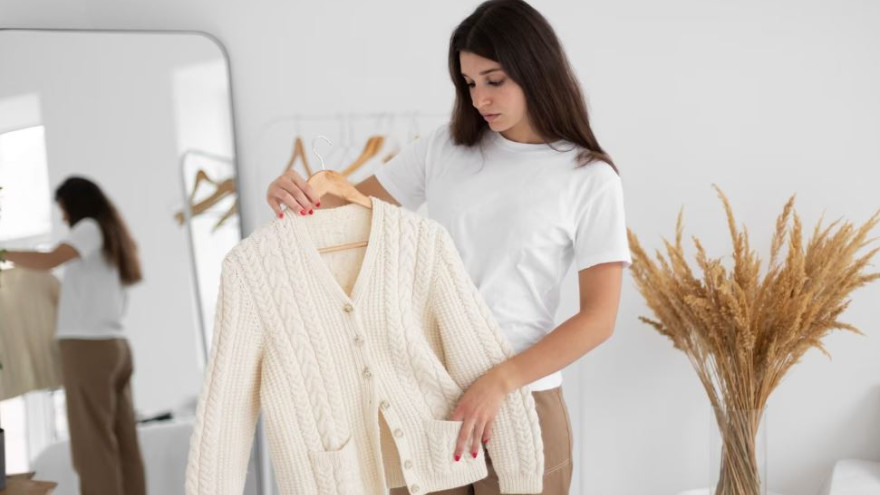
Sustainable fashion is transforming how we view our closets, offering a compelling alternative to fast fashion’s disposable culture. By blending style with sustainability, you can curate a wardrobe that reflects your personal taste while respecting the environment. However, building a chic, eco-friendly wardrobe involves more than just buying a few organic cotton shirts. It’s about adopting mindful shopping habits, investing in versatile pieces, and understanding the impact of your choices. This guide will walk you through the process of creating a wardrobe that’s as kind to the planet as it is to your personal style.
The Case for Sustainable Fashion
Why should sustainability matter in fashion? The answer lies in the environmental and social costs of the industry. From excessive water use in fabric production to the exploitation of labor in developing countries, fast fashion contributes to a range of global issues. By shifting to sustainable practices, you reduce your environmental footprint and support brands committed to ethical manufacturing.
A sustainable wardrobe doesn’t mean compromising on style. In fact, it often leads to a more refined approach to fashion, prioritizing quality over quantity. With a focus on timeless designs and durable materials, your clothes can make a statement about your values and your aesthetic.
Start with a Capsule Wardrobe
Building a sustainable wardrobe begins with a solid foundation: the capsule wardrobe. This concept involves owning a limited number of versatile, high-quality pieces that can be mixed and matched to create multiple outfits.
A well-curated capsule wardrobe often includes staples like a tailored blazer, a classic white button-up, dark denim, and neutral sweaters. These items never go out of style, and their versatility ensures you’ll get maximum wear out of each piece. By investing in fewer, better items, you not only reduce waste but also save time deciding what to wear each day.
When selecting pieces for your capsule wardrobe, look for neutral colors and timeless cuts. Avoid overly trendy items that may feel outdated within a season. Instead, focus on clothing made from durable, natural fabrics like organic cotton, linen, or Tencel, which are both stylish and sustainable.
Prioritize Ethical and Transparent Brands
Supporting brands with ethical practices is one of the most impactful steps toward sustainability. Companies like Stella McCartney, Patagonia, and Eileen Fisher are leading the charge by using eco-friendly materials, ensuring fair labor practices, and embracing circular fashion. These brands often provide transparency about their sourcing, allowing you to shop with confidence.
Research is key when exploring new labels. Many ethical brands prominently display their certifications, such as GOTS (Global Organic Textile Standard) or Fair Trade. Additionally, shopping directly from these companies rather than through third-party retailers ensures your purchase supports their mission fully.
By choosing ethical brands, you’re casting a vote for an industry that values the planet and its people. You’re also investing in high-quality clothing that aligns with your values, making each purchase more meaningful.
Thrift and Vintage Shopping: A Treasure Trove of Style
Second-hand shopping is a cornerstone of sustainable fashion. Thrifting reduces demand for new production, minimizes waste, and adds unique character to your wardrobe. Vintage stores, consignment shops, and online platforms like Depop or Poshmark offer an abundance of pre-loved pieces waiting for a second life.
When shopping second-hand, take your time to explore. You might stumble upon rare finds like a retro designer bag or a perfectly worn leather jacket that becomes a signature piece. The charm of thrifted items lies in their individuality, making your wardrobe stand out in the best way possible.
Care for Your Clothes to Make Them Last
Sustainability isn’t just about buying better clothes; it’s also about maintaining what you already own. Proper care extends the life of your garments, ensuring they stay in rotation for years to come. Start by washing clothes in cold water to prevent shrinkage and color fading. Air drying is another eco-friendly option that reduces energy use and protects fabric integrity.
For minor damages like loose seams or small tears, consider repairing your clothing instead of discarding it. Learning basic sewing skills can save your favorite pieces and add a personal touch to your wardrobe. If a garment is beyond repair, think about repurposing it into something new, like turning an old sweater into a cozy scarf or pillow cover.
Incorporating Accessories Mindfully
Accessories are the finishing touches that bring your outfits to life, but they can also be sustainable. Opt for jewelry made from recycled metals, bags crafted from vegan leather, or scarves woven from organic fabrics. Quality over quantity applies here, too—invest in a few standout pieces that complement your wardrobe rather than an abundance of cheap, trendy items.
Supporting small, artisan brands is another way to shop sustainably. Many of these businesses prioritize handmade, eco-friendly creations that add a unique flair to your style while supporting local economies.
Conclusion
Building a chic, eco-friendly wardrobe is a journey that begins with mindful decisions. By embracing timeless styles, supporting ethical brands, and caring for your clothes, you create a fashion statement that goes beyond appearance. Sustainable fashion is not just about reducing harm; it’s about celebrating craftsmanship, individuality, and responsibility. As you embark on this journey, remember that every small step contributes to a larger movement toward a more sustainable future.
